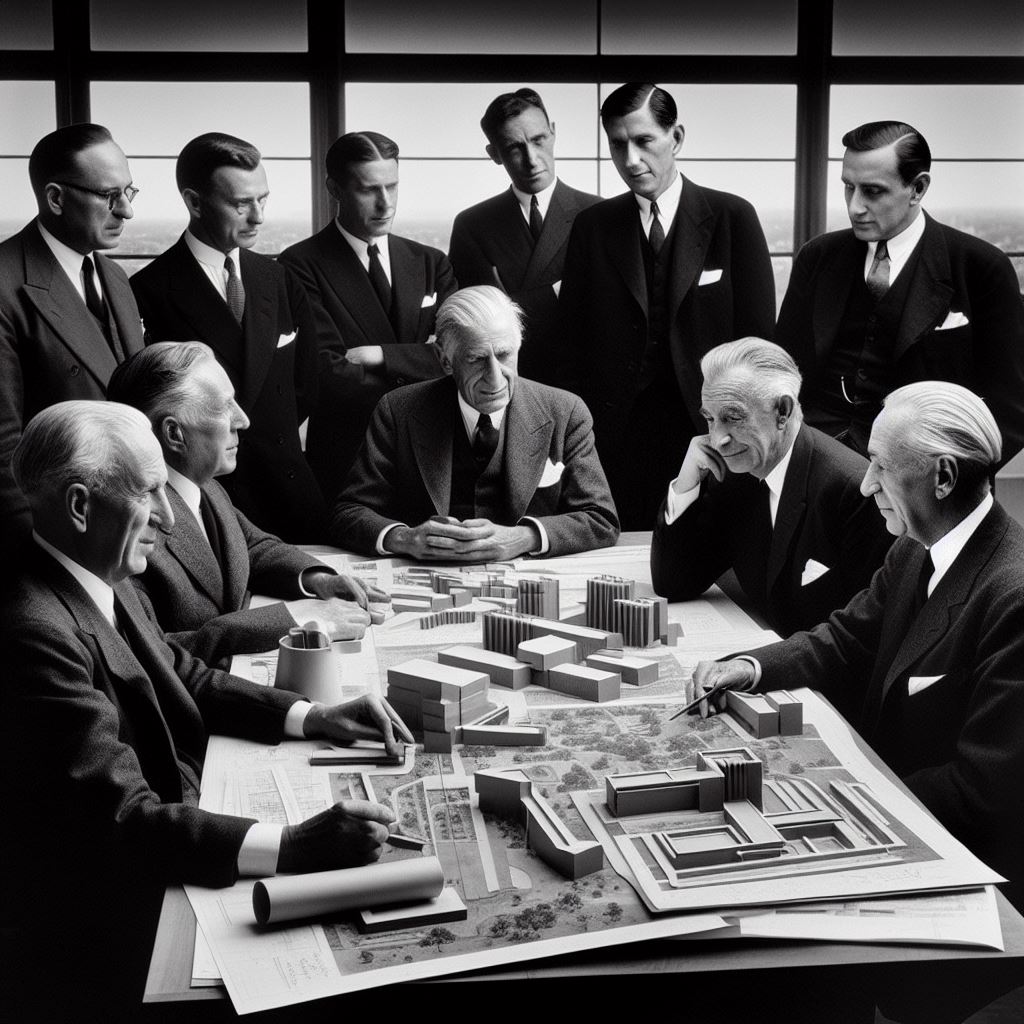Introduction
Architecture in Canada has always played a crucial role in shaping the country’s identity.
From historic landmarks to modern skyscrapers, buildings not only serve functional purposes but also reflect the cultural and historical values of Canada.
They become symbols of national pride and showcases of architectural innovation.
In this blog post, we will explore the exciting possibilities that lie ahead in the future of architecture in Canada.
As the world evolves, so does architecture, and it is crucial to examine how Canadian architects are adapting to emerging trends in design, sustainability, and technology.
One aspect we will discuss is the increasing focus on sustainable architecture.
With growing concerns about climate change and the need for eco-friendly solutions, architects in Canada are exploring ways to integrate green technologies, such as solar panels and rainwater harvesting, into their designs.
The aim is to create buildings that are not only visually appealing but also energy-efficient and environmentally responsible.
Furthermore, we will touch upon the concept of placemaking – the practice of creating inclusive and vibrant spaces that foster community engagement.
Architects in Canada are embracing this concept, designing public spaces that enhance social interaction and promote a sense of belonging.
From urban parks to mixed-use developments, these innovative designs aim to transform the way people experience the built environment.
In short, the future of architecture in Canada promises an exciting blend of sustainability, innovation, and community-focused design.
By embracing new technologies and concepts, Canadian architects have the opportunity to shape a built environment that not only meets the needs of the present but also leaves a positive legacy for future generations.
Historical Overview of Architecture in Canada
Early Influences and Architectural Styles
- Indigenous Influence: Canada’s early architecture was heavily influenced by Indigenous cultures, with their focus on sustainable and organic designs.
- Colonial Influence: European settlers introduced styles such as Gothic Revival, Neoclassical, and Victorian, reflecting their old world heritage.
- British Influence: British architectural styles, including Georgian and Queen Anne, left a lasting impact on Canada’s urban landscapes.
- French Influence: French-inspired architecture, like the Chateau style, can be seen in historic buildings in Quebec.
Iconic Canadian Landmarks and Buildings
- Parliament Hill, Ottawa: A symbol of Canadian democracy, the Gothic Revival Parliament Buildings showcase the country’s architectural grandeur.
- CN Tower, Toronto: This modern marvel became an instant icon, with its futuristic design and towering height.
- Habitat 67, Montreal: This experimental housing complex designed by Moshe Safdie revolutionized urban living.
- Banff Springs Hotel, Alberta: Known as the “Castle in the Rockies,” this grand hotel showcases the Rockies’ natural beauty.
- Vancouver Public Library, British Columbia: Renowned for its distinctive design, the library stands as a symbol of Vancouver’s architectural innovation.
- Casa Loma, Toronto: This medieval-inspired castle-turned-museum offers a glimpse into Canada’s past.
- Canadian Museum for Human Rights, Winnipeg: Designed by Antoine Predock, this striking museum represents Canada’s commitment to human rights.
- Rideau Canal, Ontario: This UNESCO World Heritage Site is not only a scenic waterway but also an engineering marvel.
- Chateau Frontenac, Quebec City: This luxurious hotel, resembling a fairytale castle, graces the picturesque Quebec City skyline.
- Royal Ontario Museum, Toronto: Its bold architecture, featuring a crystal-like extension known as “The Crystal,” captivates visitors.
- St. Joseph’s Oratory, Montreal: With its awe-inspiring dome, this architectural gem is a notable place of worship.
- Old Quebec, Quebec City: This historic district, with its charming European-inspired architecture, offers a window into Canada’s past.
- Royal Architectural Institute of Canada, Ottawa: The RAIC promotes excellence in Canadian architecture and showcases the profession’s achievements.
- Canadian Canoe Museum, Peterborough: This unique museum celebrates the canoe’s significance in Canadian history and showcases indigenous artistry.
- Art Gallery of Ontario, Toronto: Renovated by renowned architect Frank Gehry, the AGO presents a stunning blend of old and new.
In general, Canada’s architecture has evolved over time, reflecting a rich tapestry of influences.
From Indigenous designs to European-inspired styles, Canadian landmarks and buildings showcase the country’s diverse architectural heritage.
Whether it be the grandeur of Parliament Hill or the cutting-edge design of the CN Tower, Canada’s architectural future holds promise and innovation.
Read: Mech Engineering: The Freelance Path CA
Current Landscape of Architecture in Canada
The current architectural trends and practices in the country
- Emphasis on sustainable design: Architects in Canada are increasingly focused on creating environmentally friendly and energy-efficient buildings.
- Integration of technology: The use of advanced technology such as Building Information Modeling (BIM) is becoming more prevalent in architectural design.
- Urbanization and mixed-use spaces: Architects are adapting to the growing trend of urban living by designing mixed-use developments that combine residential, commercial, and public spaces.
- Incorporation of natural elements: There is a shift towards incorporating natural materials and biophilic design principles into architectural projects.
The impact of sustainability and green building practices
- Reduction of carbon footprint: Sustainable design practices aim to minimize the negative environmental impact of buildings by reducing energy consumption and using renewable resources.
- Improved indoor air quality: Green building practices prioritize the use of non-toxic materials and efficient ventilation systems, resulting in healthier indoor environments for occupants.
- Cost savings: Sustainable buildings are designed to be energy-efficient, leading to reduced energy costs for both occupants and building owners.
- Leadership in Energy and Environmental Design (LEED) certification: Many architects in Canada strive to achieve LEED certification for their projects, which signifies a high level of sustainability and environmental performance.
Notable Canadian architects and their contributions
- Arthur Erickson: Known for his innovative modernist designs, Erickson’s work includes iconic buildings like the Robson Square in Vancouver.
- Raymond Moriyama: Moriyama is recognized for his contributions to civic architecture, including the design of the Canadian War Museum in Ottawa.
- Bing Thom: Thom’s designs often blend cultural influences with modernist principles, such as the Chan Centre for the Performing Arts in Vancouver.
- Patkau Architects: This Vancouver-based firm is known for its experimental and environmentally conscious designs, such as the Jim Pattison Centre of Excellence in Sustainable Building Technologies and Renewable Energy Conservation.
The influence of cultural diversity on Canadian architecture
- Multicultural influences: Canada’s diverse population contributes to a rich architectural tapestry, with influences from various cultural traditions and design aesthetics.
- Indigenous architecture: There is a growing recognition and incorporation of Indigenous design principles, honoring the land’s original inhabitants and their architectural heritage.
- Immigrant contributions: Immigrants bring their own architectural backgrounds and expertise, enriching the country’s architectural landscape with new ideas and perspectives.
- Community engagement: Cultural diversity fosters community engagement in design processes, promoting inclusive and collaborative approaches to architecture.
In review, the current landscape of architecture in Canada is characterized by a focus on sustainable design, the integration of technology, urbanization, and the incorporation of natural elements.
The impact of sustainability and green building practices is evident in the reduction of carbon footprints, improved indoor air quality, cost savings, and LEED certification.
Notable Canadian architects have made significant contributions to the field, while cultural diversity influences the architectural fabric of the country by incorporating multicultural influences, Indigenous design principles, and immigrant contributions.
This dynamic and evolving landscape sets the stage for a promising future of architecture in Canada.
Read: Canadian Electrical Code: What Engineers Must Know
Technological Advancements and their Implications for Architecture in Canada
Advancements in technology shaping architecture
- Technology has brought about incredible advancements in architectural design and construction processes.
- The use of advanced software programs allows architects to create complex and innovative designs.
- Virtual reality (VR) technology enables architects to create immersive and realistic virtual walkthroughs.
- Building information modeling (BIM) technology enhances collaboration and efficiency in the design and construction phases.
- Sustainable design practices are now integrated into architectural projects through the use of energy-efficient technologies.
- the Internet of Things (IoT) technology has enabled the development of smart buildings with automated systems.
- The integration of technology into architecture has resulted in more efficient and sustainable structures.
The use of artificial intelligence and machine learning
- Artificial intelligence (AI) and machine learning have become valuable tools for architects in Canada.
- AI algorithms can analyze vast amounts of data and generate design options based on predefined parameters.
- Machine learning algorithms can learn from previous design patterns and provide optimized solutions.
- AI-powered software can simulate how architectural designs will perform in different environmental conditions.
- The use of AI and machine learning improves accuracy, reduces design iterations, and saves time.
- AI also assists in predicting and managing the lifecycle of buildings, optimizing their energy consumption.
- The integration of AI and machine learning in architectural design enhances creativity and problem-solving.
Impact of 3D printing and prefabrication methods on construction processes
- The advent of 3D printing technology has revolutionized the construction industry in Canada.
- 3D printers can create intricate architectural components with high precision and reduced material waste.
- This technology allows for faster construction processes and customization options.
- Prefabrication methods, combined with 3D printing, enable the construction of modular and sustainable buildings.
- Prefabricated modules can be quickly assembled on-site, reducing construction time and costs.
- 3D printing and prefabrication methods also minimize the environmental impact of construction activities.
- These advancements enhance construction efficiency, affordability, and sustainability in Canada.
Basically, technological advancements have significantly impacted the future of architecture in Canada.
The use of advanced software, virtual reality, and sustainable design practices have transformed architectural design.
Artificial intelligence and machine learning have become essential tools, enhancing creativity and efficiency.
Moreover, 3D printing, and prefabrication methods have revolutionized construction processes, making them faster and more sustainable.
These advancements not only improve the quality and efficiency of architectural projects but also contribute to a more sustainable built environment in Canada.
Read: Electrical Engineering Innovations in Canada

Sustainable Development and Resilient Architecture in Canada
The Importance of Sustainable Design and its Integration into Architecture
- Sustainable design plays a crucial role in addressing environmental concerns and promoting a healthier future.
- Integrating sustainable elements in architecture reduces energy consumption and minimizes environmental impact.
- Architects must consider factors such as energy efficiency, use of renewable materials, and waste reduction in their designs.
- The integration of sustainable design principles contributes to the overall well-being of occupants and the surrounding community.
- By incorporating sustainable practices into architecture, Canada can lead the way towards a greener and more sustainable future.
The Concept of Resilient Architecture in the Face of Climate Change and Natural Disasters
- Resilient architecture focuses on designing structures that can withstand and adapt to changing climatic conditions.
- With increasing frequency and intensity of natural disasters, resilient architecture becomes crucial.
- Resilient architecture considers factors like extreme weather, rising sea levels, and natural hazard risks.
- Designing buildings and infrastructure to be resilient ensures their long-term viability and reduces damage and loss during disasters.
- Climate change adaptation and mitigation are key considerations for architects to create resilient structures.
Examples of Sustainable and Resilient Architectural Projects in Canada
- The MEC Head Office in Vancouver is a prime example of sustainable design.
- This building utilizes rainwater harvesting, solar panels, and energy-efficient systems to minimize its environmental footprint.
- The Dockside Green development in Victoria showcases sustainable community design.
- It incorporates green roofs, wastewater treatment, and renewable energy generation to create a sustainable urban neighborhood.
- The Manitoba Hydro Place in Winnipeg is a pioneer in energy-efficient design.
- It features an innovative double-skin curtain wall, advanced HVAC systems, and natural lighting to reduce energy consumption.
- The Halifax Central Library is an architectural marvel emphasizing sustainability and resilience.
- It incorporates green building materials, energy-efficient systems, and stormwater management strategies.
To conclude, sustainable development and resilient architecture are fundamental for the future of architecture in Canada.
The integration of sustainable design principles not only reduces environmental impact but also enhances the well-being of inhabitants.
Resilient architecture prepares buildings for climate change and minimizes damage caused by natural disasters.
Canada’s commitment to sustainable and resilient architectural projects is evident in iconic examples like the MEC Head Office, Dockside Green, Manitoba Hydro Place, and Halifax Central Library.
By prioritizing sustainability and resilience, Canada can lead the way in creating a greener and more resilient built environment for generations to come.
Read: Networking for Mech Engineers in Canada
Challenges and Opportunities for the Future of Architecture in Canada
Current Challenges Faced by the Architectural Industry in Canada
- Rapid urbanization and population growth leading to increased demand for housing and infrastructure.
- High competition among architectural firms for projects and clients in a saturated market.
- Continuing economic uncertainty and fluctuations affecting investment in construction and architectural projects.
- The rising cost of construction materials and labor, making projects more expensive and challenging to complete.
- Inadequate diversity and inclusion practices within the industry, resulting in a lack of representation.
Opportunities for Growth and Innovation
- The increasing popularity and demand for sustainable and environmentally friendly architecture.
- Advancements in technology and BIM (Building Information Modeling) enabling more efficient design and construction processes.
- Growing interest in smart cities and the integration of technology into urban planning.
- Opportunity to collaborate with other related fields, such as engineering and urban planning, for more holistic projects.
- Exploring new design solutions and materials to meet the changing needs and preferences of clients.
The Role of Architects in Addressing Social and Environmental Issues
- Architects can promote sustainable and energy-efficient design principles to mitigate the effects of climate change.
- Designing accessible and inclusive spaces that cater to the diverse needs of individuals in the community.
- Creating innovative designs for affordable housing to address the growing issue of housing affordability.
- Revitalizing urban areas through adaptive reuse projects, preserving historical buildings, and enhancing community spaces.
- Engaging with local communities to ensure their input and aspirations are considered in the architectural design process.
In fact, the future of architecture in Canada presents both challenges and opportunities for growth and innovation.
The industry must adapt to rapid urbanization, economic fluctuations, and increased demand for sustainable design.
Architects have the chance to address social and environmental issues, promote diversity and inclusion, and collaborate with related fields to create more holistic projects.
By embracing these challenges and seizing opportunities, architects can shape a brighter and more sustainable future for Canada’s architectural landscape.
Conclusion
The future of architecture in Canada looks promising.
While there are obstacles to overcome, such as sustainability and urbanization, there is a sense of optimism about the direction in which Canadian architecture is heading.
The architectural landscape in Canada has witnessed tremendous advancements in recent years.
From incorporating sustainable practices and energy-efficient designs to promoting cultural diversity and inclusiveness, Canadian architects are at the forefront of innovative and progressive developments.
These architects are not only creating buildings that are functional and aesthetically pleasing but also prioritizing the well-being of the communities they serve.
With the increasing demand for sustainable and environmentally friendly architecture, Canadian architects have an opportunity to lead the way in creating greener and more sustainable cities.
The integration of technology and the use of renewable energy sources are becoming more prevalent in architectural designs, contributing to a more sustainable future for Canada.
Additionally, the preservation of heritage buildings and cultural landmarks remains a priority, as these structures are an essential part of Canada’s history and identity.
By further exploring and engaging in the field of architecture, architects and aspiring professionals can contribute to shaping the future of the built environment.
With a commitment to innovation, sustainability, and inclusivity, Canadian architects have the potential to continue creating spaces that enhance quality of life and reflect the unique identity of the country.
So let us embrace the opportunities that lie ahead and continue striving for excellence in the field of architecture.




